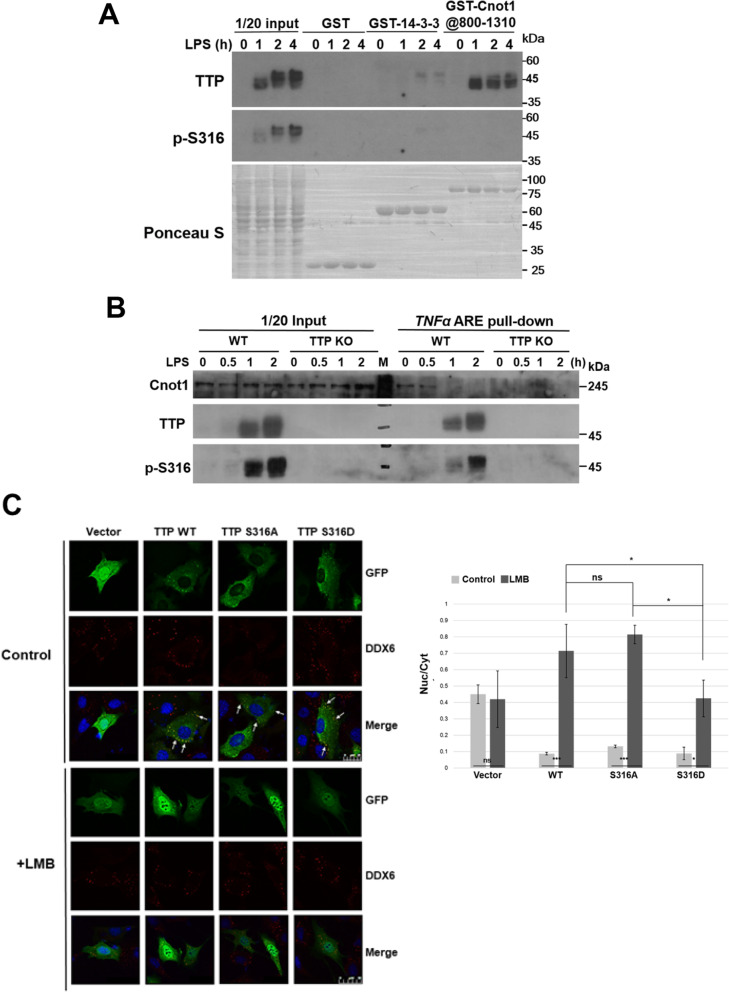Fig. 6.
Ser316 phosphorylation impairs TTP interaction with CNOT1 in LPS-stimulated RAW264.7 cells. A GST-pull down assay. RAW264.7 cells were treated with 100 ng/ml LPS for 0, 1, 2, and 4 h. Whole cell extracts were harvested and incubated with GSH sepharase-bound GST, or GST-14-3-3, or GST-Cnot1@800–1310. The pull-down protein complexes were analyzed by western blotting with anti-TTP and anti-p-S316 antibodies. B RNA pull-down assay. TNFα ARE probe was incubated with cell extracts from control and LPS-treated for 0.5 h, 1 h, and 2 h. The pull-down RNA-protein complexes were analyzed by western blotting with anti-TTP, anti-phospho-S316, and anti-Cnot1. C Immunofluorescent staining. NIH3T3 cells cultured on coverslips were transfected with GFP, GFP-TTP(WT), GFP-TTP(S316A), or GFP-TTP(S316D) expressing plasmids. After 24 h, the cells were untreated (control) or treated with leptomycin B (LMB) for 5 h. Immunofluorescence was performed using anti-DDX6 as a marker of P-bodies and images were recorded using a confocal microscope. The arrows indicate the association of GFP and DDX6 signals. The size bar in the control panel is 25 μM and in the LMB panel is 50 μM. The right panel was the quantitative immunofluorescence analysis showing the ratio of nuclear and cytoplasm signals. ***P<0.001; *P<0.05; ns: non-significant. At least three independent experiments were performed

